What Is A Cranberry Bog – Do Cranberries Grow Underwater
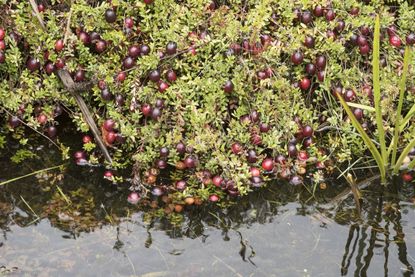

If you’re a TV watcher, you may have seen commercials with happy cranberry growers talking about their crop with hip waders’ thigh deep in water. I don’t actually watch commercials, but in my mind, I do envision crimson berries growing on bushes that have been submerged. Is this true though? Do cranberries grow underwater? I think a lot of us suppose that cranberries grow in water. Read on to find out how and where do cranberries grow.
What is a Cranberry Bog?
The flooded crop site I have envisioned is called a bog. I guess someone told me that when I was a kid, but what is a cranberry bog? It’s an area of soft, marshy ground, usually near wetlands, an important part of how cranberries grow, but not the entire story.
Where Do Cranberries Grow?
A cranberry bog needs to have acidic peaty soil for fruitful berries. These bogs are found from Massachusetts to New Jersey, Wisconsin, and Quebec, Chile, and primarily in the Pacific Northwest region which includes Oregon, Washington, and British Columbia. So, do cranberries grow underwater? It seems that cranberries in water are integral to their growth but only at certain phases. Cranberries do not grow underwater or in standing water. They grow in these specially constructed low-lying bogs or marshes in acidic soils similar to those required by blueberries.
How Do Cranberries Grow?
While cranberries aren’t grown their entire existence in water, flooding is used for three phases of growth. In the winter, fields are flooded, resulting in a thick covering of ice that protects the developing flower buds against cold temperatures and dry winter winds. Then in the spring, when temperatures warm, the water is pumped out, the plants flower, and fruit is formed. When the fruit is mature and red, the field is often flooded again. Why? Cranberries are harvested in one of two ways, wet harvest or dry harvest. Most cranberries are wet harvested when the field is flooded, but a few are dry harvested with a mechanical picker, to be sold as fresh fruit. When fields are going to be wet harvested, the field is flooded. A giant mechanical eggbeater stirs the water about dislodging the berries. Ripe berries bob to the top and are gathered to be made into juices, preserves, frozen, or any of 1,000 different products including your famous holiday cranberry sauce.
Gardening tips, videos, info and more delivered right to your inbox!
Sign up for the Gardening Know How newsletter today and receive a free download of our most popular eBook "How to Grow Delicious Tomatoes."

Amy Grant has been gardening for 30 years and writing for 15. A professional chef and caterer, Amy's area of expertise is culinary gardening.
-
 Grow a Bathroom Oasis: 8 Best Bathroom Plants With No Light or Low Light
Grow a Bathroom Oasis: 8 Best Bathroom Plants With No Light or Low LightSome apartment dwellers grow the best bathroom plants with no light or low light. Read how one of our favorite plant lovers does it in the big city.
By Teo Spengler
-
 "My Worst Mistake" – Gardeners Share 10 Hard-Learned Lessons
"My Worst Mistake" – Gardeners Share 10 Hard-Learned LessonsGardeners never stop learning, and sometimes our mistakes are the best teachers. But why not save time and heartache by learning from other gardeners' failures?
By Melanie Griffiths
-
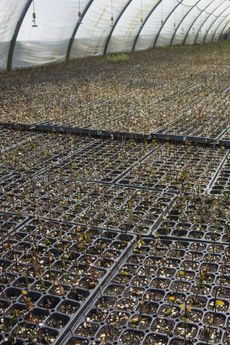 Growing Cranberries From Cuttings: Tips For Rooting Cranberry Cuttings
Growing Cranberries From Cuttings: Tips For Rooting Cranberry CuttingsRooting cranberry cuttings may require some patience, but for the dedicated gardener, that's half the fun. Interested in trying your own cranberry cutting propagation? Find out how to root cranberry cuttings in this article. Click here for more info.
By Amy Grant
-
Preventing Cranberry Diseases: How To Treat A Sick Cranberry Plant
Cranberries are a quintessentially American fruit that not many people even realize they can grow at home. If you?re one of the lucky few who have cranberries in their garden, odds are you?re very protective of them. Learn how to treat a sick cranberry plant in this article.
By Liz Baessler
-
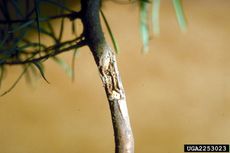 Cranberry Insect Pests: How To Treat Pests On Cranberries
Cranberry Insect Pests: How To Treat Pests On CranberriesCranberries are wonderful fruits that not many people think they can grow at home. If you?re one of the lucky few with your very own cranberry vines, you might be devastated by the sudden invasion of insects. Learn more about cranberry pest management here.
By Liz Baessler
-
 Cranberry Companion Plants: What To Grow Near Cranberries
Cranberry Companion Plants: What To Grow Near CranberriesWhenever you decide to plant anything, you should learn about the plants that are companions to it in order to maximize your plants? performance. This is exactly what I did with my cranberry plants. Click here to learn more about plants that grow well with cranberries.
By Shelley Pierce
-
 Problems With Cranberries: Common Fixing Cranberry Diseases And Pests
Problems With Cranberries: Common Fixing Cranberry Diseases And PestsIf you?re looking for an unusual addition to your garden this year, cranberries are where it?s at. But before you dive into the bog head first, make sure you read up on some of the most common problems that can affect this sweet tart of a crop. This article will help.
By Kristi Waterworth
-
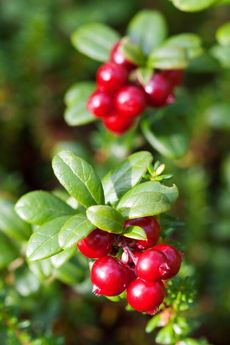 Potted Cranberry Plants – Tips On Growing Cranberries In Containers
Potted Cranberry Plants – Tips On Growing Cranberries In ContainersBerry producing plants like cranberries are now being added to multi-functional container designs. You may be thinking: hold on a minute, potted cranberry plants? Don't cranberries grow in large bogs? In this article, we will discuss growing cranberries in containers.
By Darcy Larum
-
 Cranberry Propagation Tips: How To Propagate Cranberries In The Garden
Cranberry Propagation Tips: How To Propagate Cranberries In The GardenHave you ever wondered how to propagate cranberries? If you, too, are interested in cranberry propagation, click on the following article to find out useful information on reproducing cranberries. Learn more here.
By Amy Grant
-
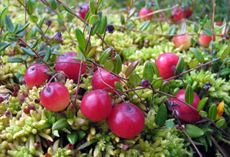 Different Cranberry Varieties: A Guide To Common Types Of Cranberry Plants
Different Cranberry Varieties: A Guide To Common Types Of Cranberry PlantsCranberry season is looked forward to and celebrated from fall into winter. Yet, even cranberry devotees may not know much about this little berry, including different cranberry varieties because, there are several varieties of cranberry. Learn about them here.
By Amy Grant